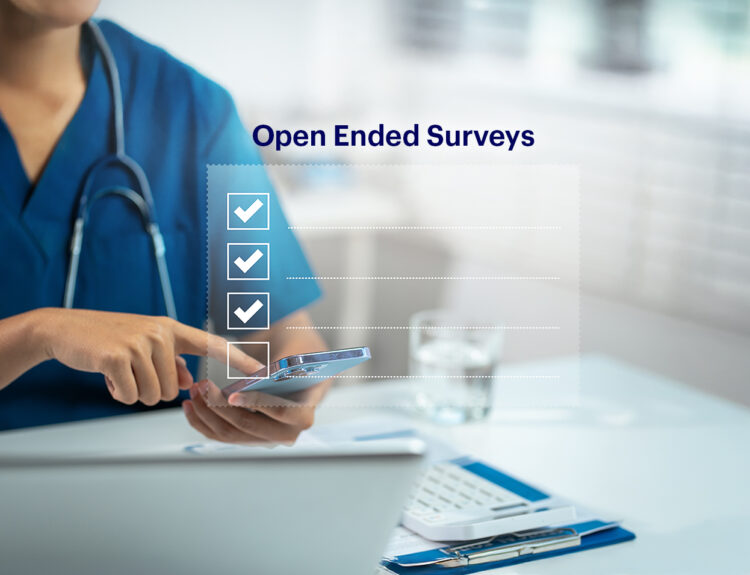When you think of the healthcare sector, the only frontliners you can visualize are doctors and nurses. But don’t you think pharmacists, too, play a crucial role in helping you recover? They may not be equivalent to doctors, but they can prescribe medications for common healthcare issues ranging from migraines to muscle aches. In fact, their job is a little more tedious than a doctor’s as they don’t have interns or assistants to ease their job.
From dispensing medicines to managing inventory logistics, pharmacists have to multitask while managing time constraints. But, their never-ending task list leads to one problem – they fail to realize the importance of customer care and often miss out on interacting with customers proactively.
A recent survey conducted by MDForLives has revealed two crucial things:
- Survey Finding 1: 86% of pharmacy customers feel satisfied when pharmacists proactively address their concerns, including clearing doubts and sharing potential side effects of medicines beforehand.
- Survey Finding 2: 72% of pharmacists have stated their inability to develop a concrete customer engagement strategy because of time constraints.
Now, the essential question arises — “How can pharmacists plan out an effective customer engagement strategy while accomplishing their other tasks?” In this blog, we have mentioned strategies that can help pharmacists better manage their time, devise strategies, and turn pharmacy into a ‘proactive pharmacy’.
WHY CUSTOMER SATISFACTION MATTERS
Customer satisfaction is beyond flashing a friendly smile or asking “How may I help you?”. It’s more about building a trust-worthy relationship so that patients keep coming back to your pharmacy and feel comfortable asking questions about the medicines prescribed to them by their physicians.
Here are some reasons why customer satisfaction is essential for a proactive pharmacy:
- Brand Reputation: Customers will highly recommend your pharmacy to their peers when satisfied. Always remember, word-of-mouth matters!
- Strengthens Customer-Pharmacist Relationships: When a pharmacy customer feels valued and heard, they will automatically develop a trusting relationship with you, leading to better communication and collaboration.
- Improved Medication Adherence: Satisfied pharmacy customers will adhere to their medication regimens, leading to better health outcomes.
EFFECTIVE CUSTOMER ENGAGEMENT STRATEGY FOR BUSY PHARMACISTS
The workload that pharmacists carry on their shoulders is undeniably heavy. But that shouldn’t stop them from prioritizing customer care. In fact, we firmly believe that planning a customer engagement strategy is a strategic investment!
Here are some practical tips for pharmacists to integrate proper customer engagement strategy into their daily workflow:
STRATEGIC PRIORITIZATION
Pharmacists working for a proactive pharmacy must implement a tiered consultation system to ensure efficient customer care.
Here are some suggestions:
- High-Touch Consultations: Always try to identify customers who benefit the most from extended consultations.
- Customers starting new medications with complex regimens/potential side effects.
- Customers managing chronic conditions that require medication adjustments now and then.
- Customers with limited health literacy. They might need additional information on the medicines they take or are about to take.
- Streamlined Consultations: It is essential to develop protocols for efficiently handling routine consultations, including medicine adherence tips, standardized scripts for common medicinal side effects, and quick reference guides for common medicines.These measures streamline interactions with pharmacy customers, ensure consistent and accurate customer assistance, and improve a proactive pharmacy’s overall workflow and satisfaction.
MAXIMIZE YOUR TEAM’S POTENTIAL
Another step that pharmacists need to take to provide proactive care is optimizing their team’s capabilities. They can empower pharmacy technicians to become valuable assets, which would reduce their workload and help them interact more with customers.
Pharmacists can easily invest their time in curating training programs that equip their pharmacy technicians to handle basic tasks like processing prescriptions, verifying insurance information, answering basic med-related inquiries, and last but not least, providing refill reminders.
EMBRACE TECHNOLOGICAL INNOVATION
Technological innovations in a pharmacy? Absolutely possible! Here’s how:
- Online or Phone Appointment Scheduling Systems: Physicians can use this to manage customer flow and ensure dedicated time for in-depth consultations.
- Electronic Medication Information Leaflets (e-μPILs): They can use this to give customers clear and easily accessible information about medicines.
- Inventory Management Systems: They can invest in this to minimize the time spent on stock checks and reordering of medicines.
THE CALL TO ACTION

No matter how efficient a pharmacist is in maintaining medicine inventory or dispensing medicines, he is not doing justice to his profession if he fails to build a rapport with the customers. To begin a more customer-centric approach, use the effective customer engagement strategy recommended in this blog as these strategies will help you turn your otherwise pharmacy into a proactive one, and make your customers happy!
If you are a pharmacist reading this blog, share your professional experiences and insights by registering with MDForLives. Our platform allows Allied Healthcare Professionals, Healthcare Professionals, and patients to participate in paid medical surveys tailored to their expertise.

The creative force behind the keyboard, Pallabi crafts narratives of healthcare wonders and research marvels. As a seasoned professional blogger, she ventures to unearth the riches of medical innovation, weaving them into insightful stories that educate.






